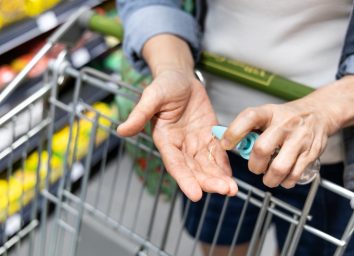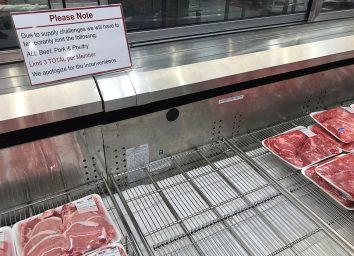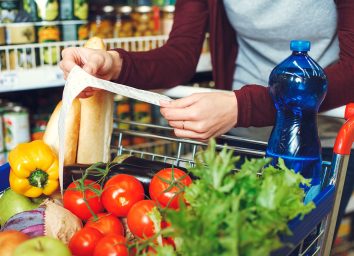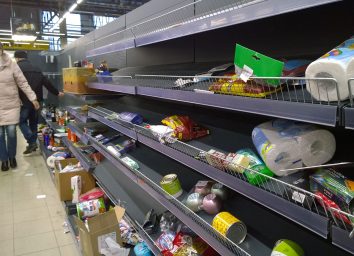Things You'll Never See in the Grocery Checkout Line Again
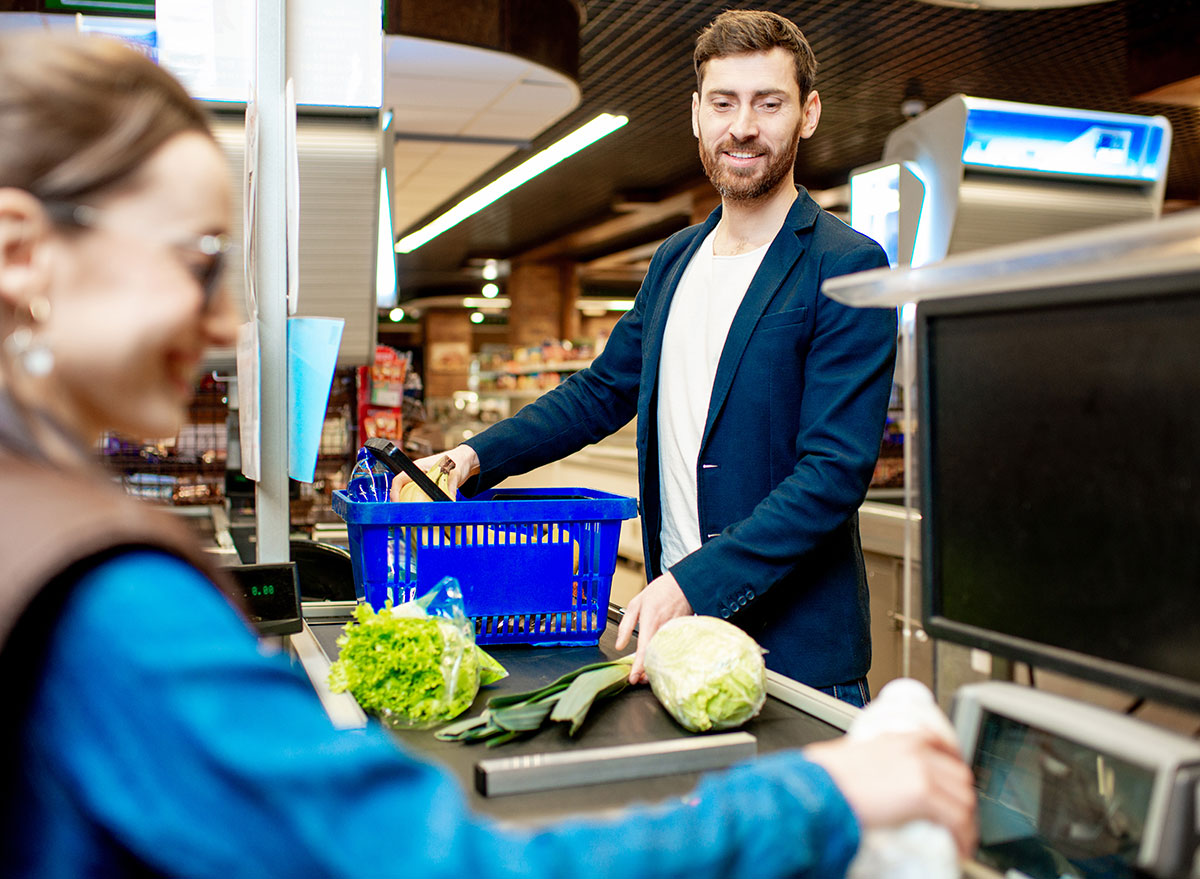
Grocery stores have had to undergo a makeover in light of the pandemic by introducing new restrictions, such as capping how many people come into the store and requiring consumers to wear masks as they shop to protect themselves and others.
Among the many things that have changed in-store is the checkout line. Cashiers are now wearing masks and gloves so that when they ring up your groceries, they lessen any chances of contracting the virus. But that's not all that has changed. Below, you'll see the three things that you will no longer see in the checkout line at grocery stores. And make sure you read 7 Precautions You Must Take Before Going Grocery Shopping before you head out the door.
Something you won't see in the checkout line is…
A cashier without a protective shield in front of them.
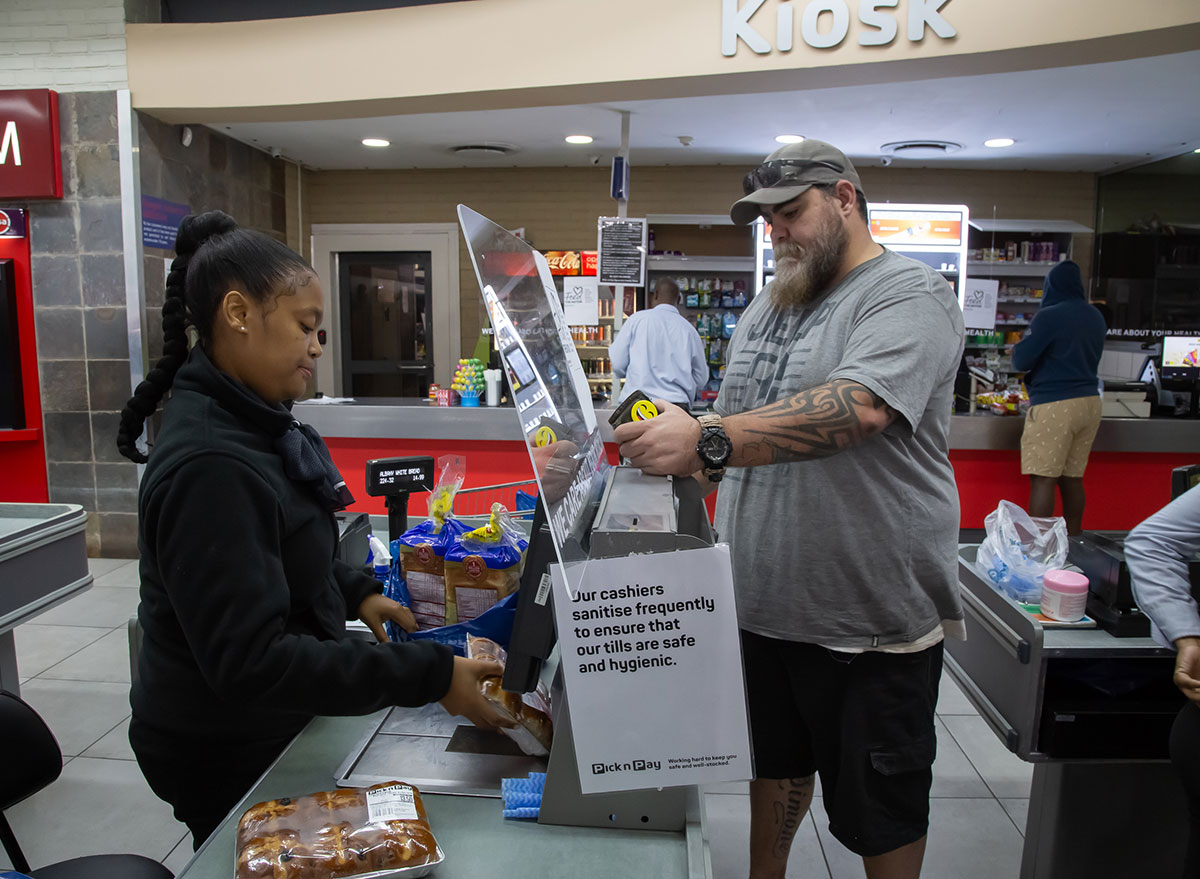
Almost every grocery store in large cities now has protective shields that separate the cashier from the customer. This will more than likely be the new normal for a long time to help protect the staff from becoming infected. Most of these shields are made with plastic and cover the entirety of the cashier's face.
More than one person putting groceries on the conveyer belt.
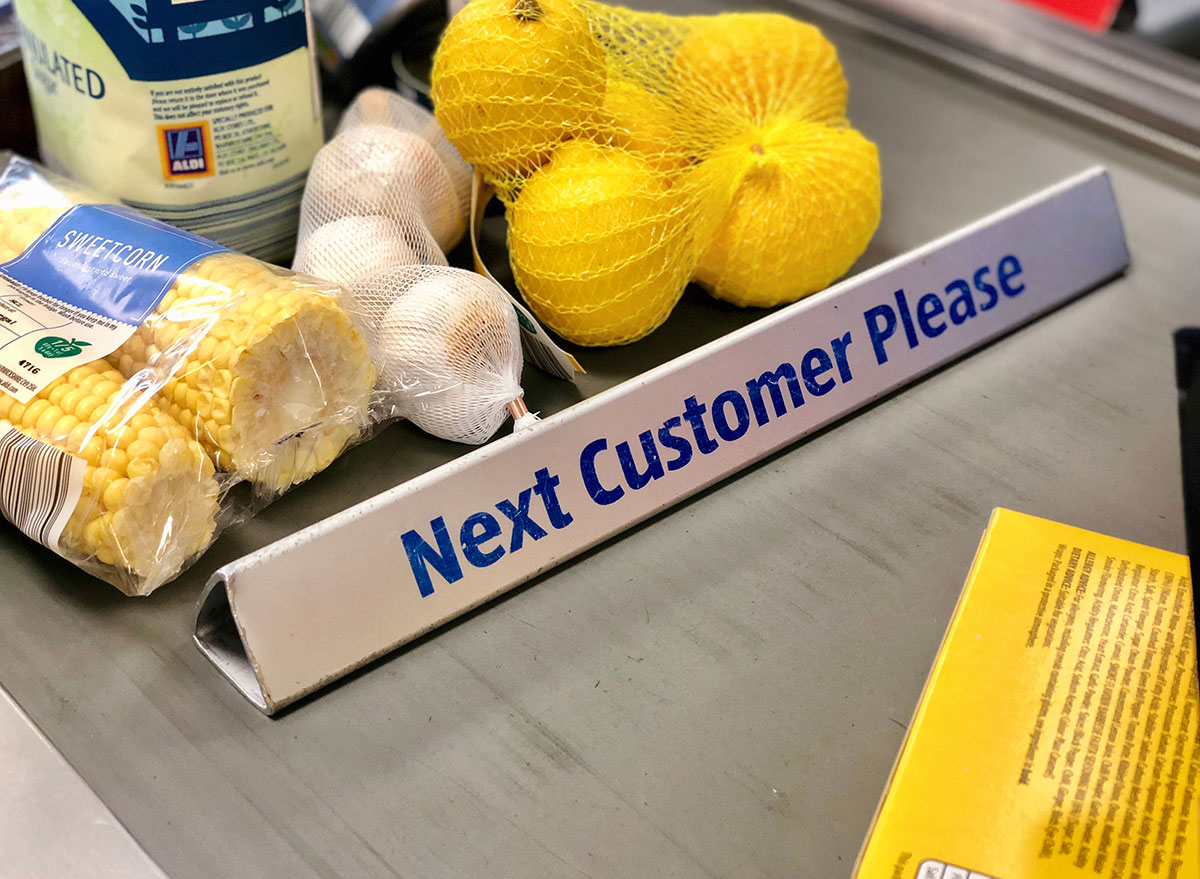
Remember grocery dividers? You may not see these for a while and so long as social distancing regulations are still at play. Think about it, if you need to separate your groceries from someone else's that means they're not standing six feet apart from you. If these are still around in the post-pandemic world, they would need to be sanitized often as they are common touchpoints.
While it's still not clear whether you can contract the virus from objects, what we do know is that the virus can survive on plastic and metal for up to three days. The main point of concern, however, would be if someone in front of you sneezes or coughs on the conveyor belt with the divider directly underneath them. If their respiratory droplets land on the divider and then you touch it immediately after and proceed to put your hands on your face, that's when you become at risk of becoming infected.
It's unlikely this sequence of events would even occur because the timing would have to be perfect and the person ahead of you would have to not be wearing a mask. Most stores won't even allow people to come in to shop without a mask.
A cashier bagging your groceries with your own reusable bags.
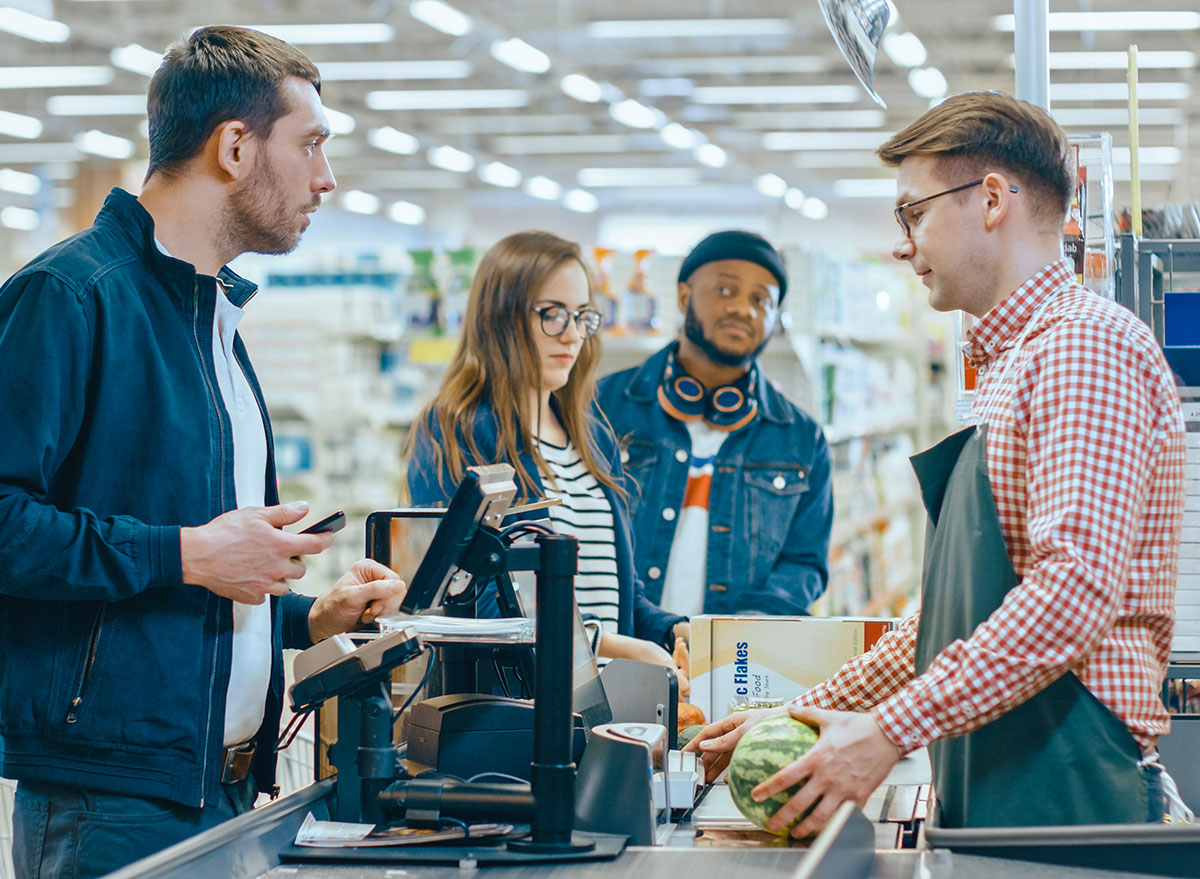
Depending on where you live, many popular grocery chains such as Trader Joe's and Whole Foods will still let you bring reusable bags, but only if you agree to bag your own groceries. This is just another precaution you can take to lessen the chances of infecting someone with the virus. Some states, such as New Hampshire, have banned the use of reusable bags altogether.
